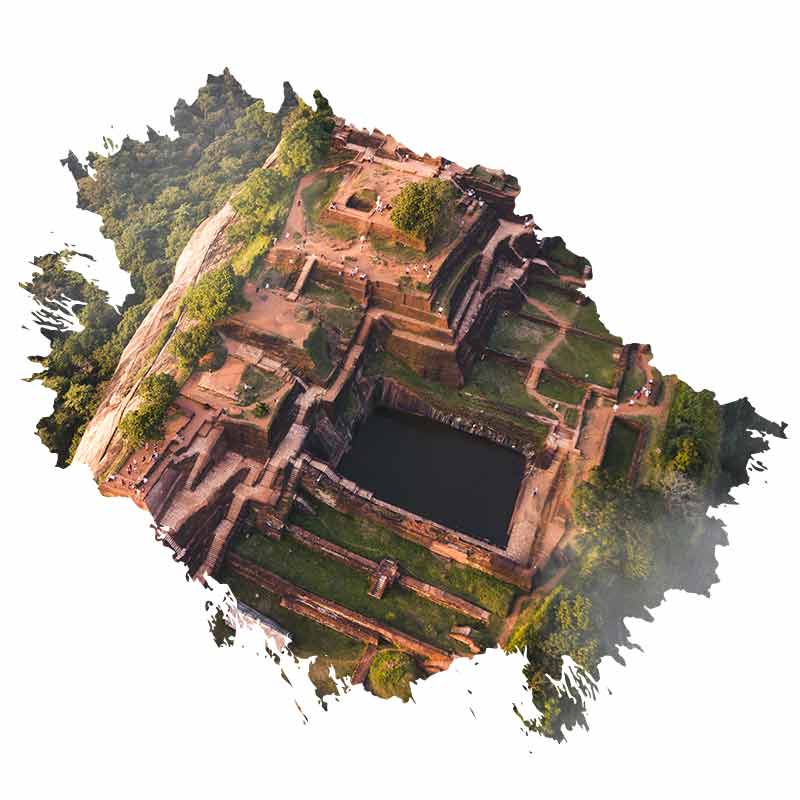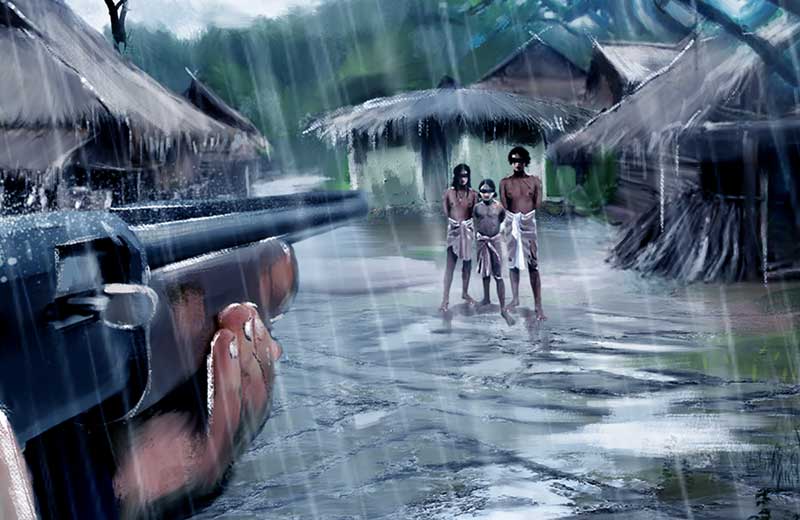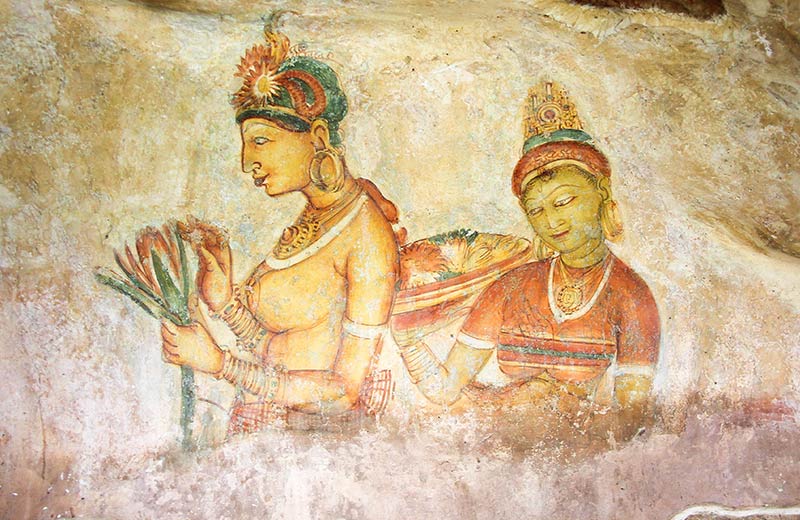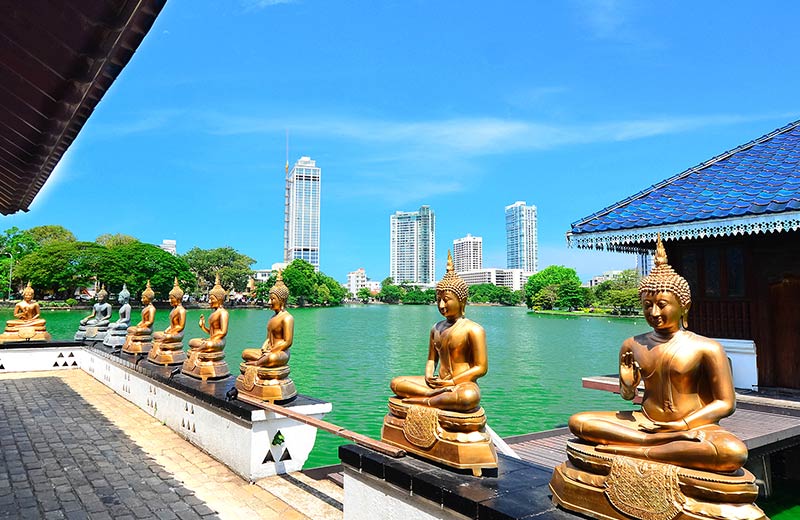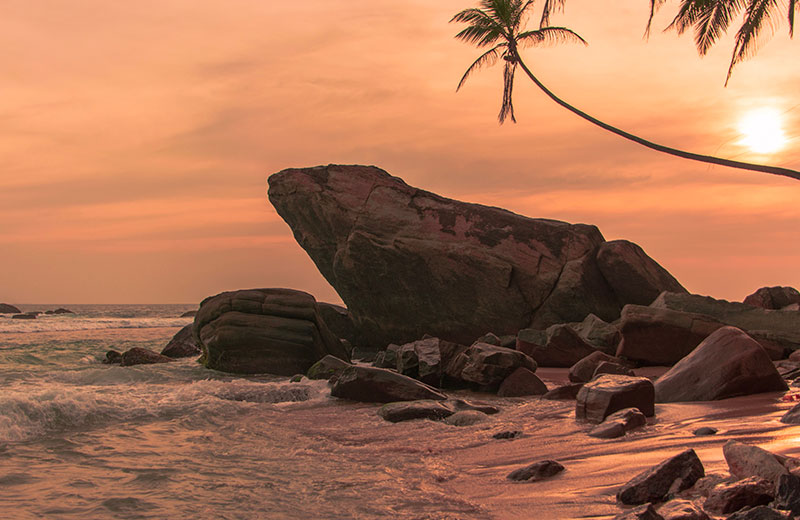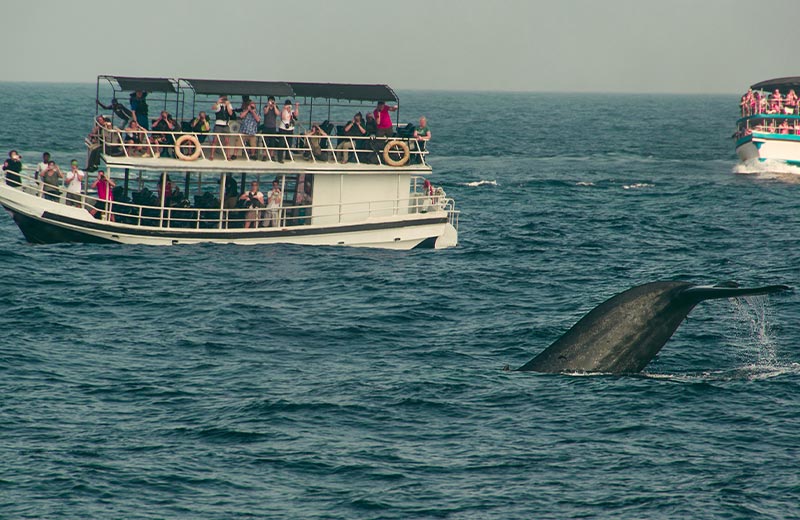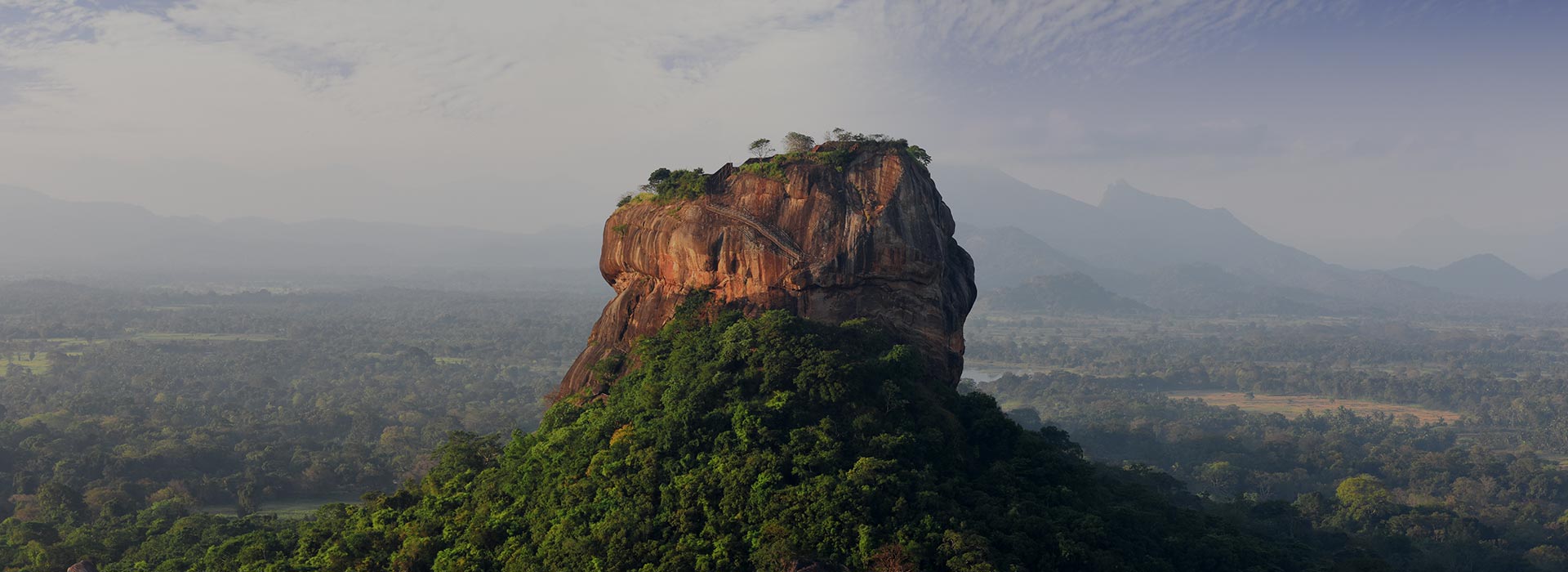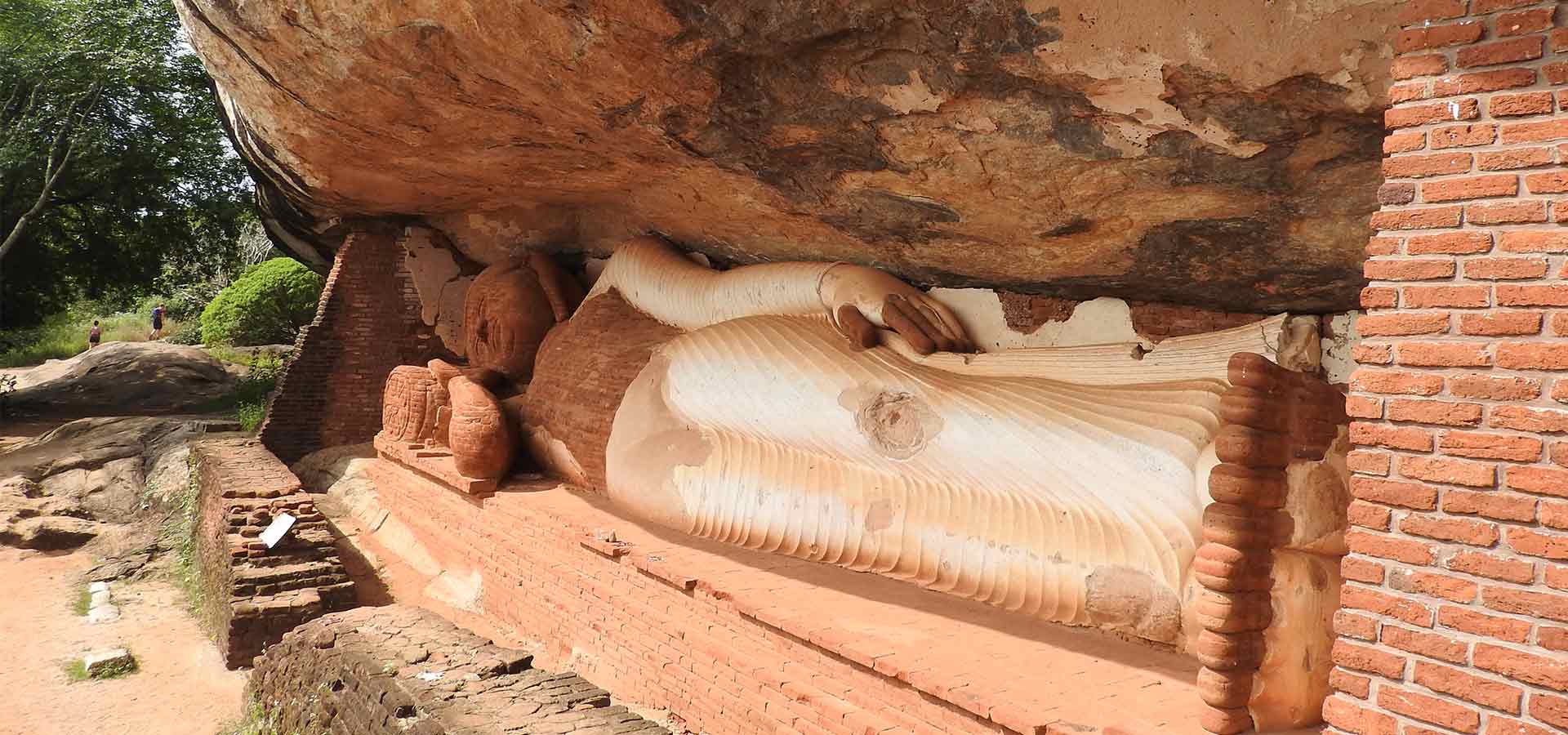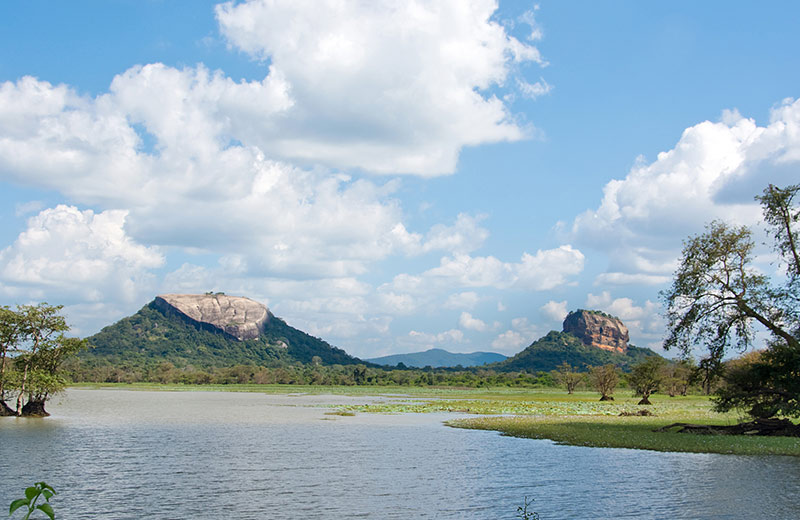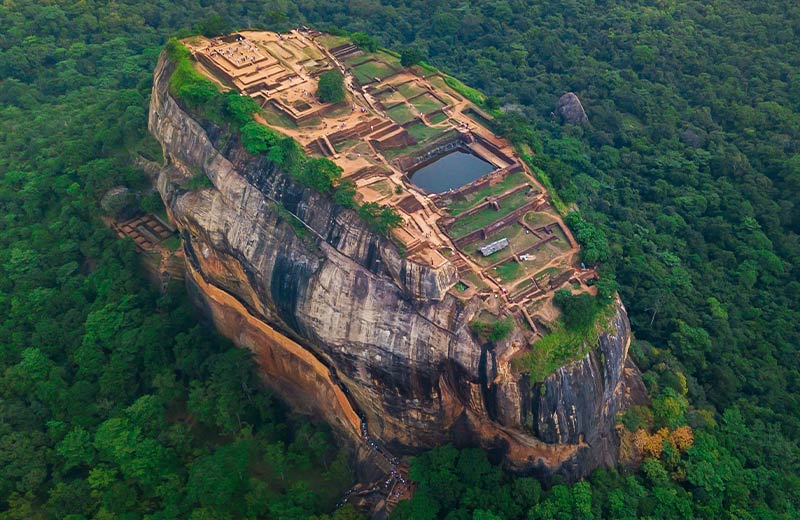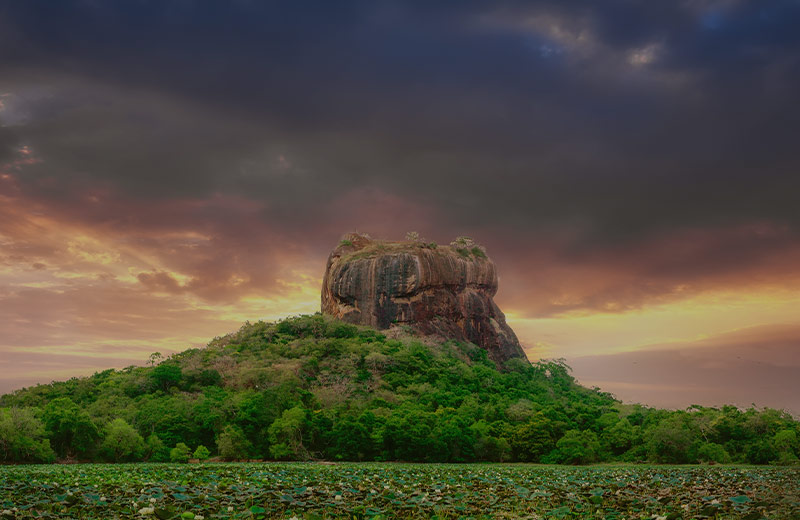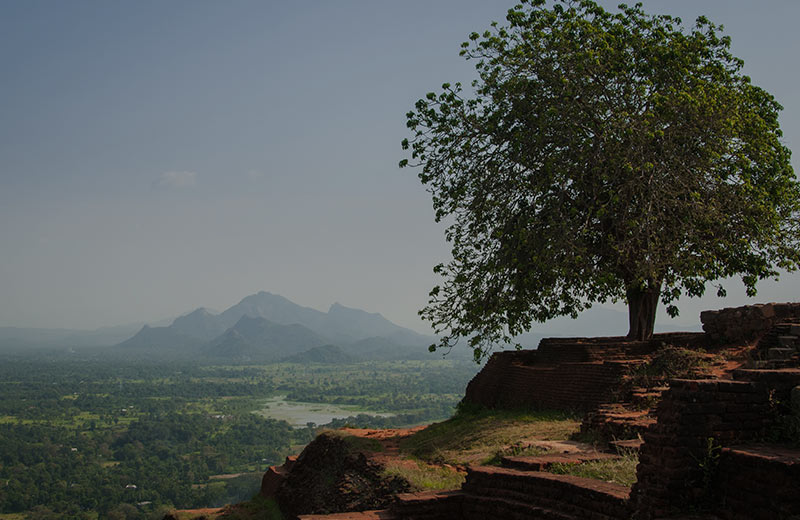Creating a Pleasure Palace
Kashyapa was a man who revelled in sensory experiences and he wanted his specially constructed masterpiece to indulge his every sensory desire. Thus, Sigiriya was designed to be a pleasure palace for the extravagant king and his trusted aides. Beautiful and intricately designed terrace, boulder and water gardens, the latter consisting of extremely sophisticated hydraulic systems, were laid out around the rock for the gratification of the royals.
The western face of the rock, akin to a gallery, was covered in intricate art, of which the most famous are the sensuous and detailed paintings of the semi-naked ‘Sigiriya Damsels’. A highly polished, plastered ‘Mirror Wall’ was placed beneath the gallery containing the famous frescoes. Those who visited Sigiriya in its glory days to marvel at its wonderment, scribbled poetry and prose on this wall, which became a special homage to the art and beauty unique to the spectacular rock fortress.
The landscape surrounding the rock was transformed into a functional city with houses, hospitals, cemeteries, as well as specific precincts for hunters, scavengers and foreigners. Moats and ramparts were built to fortify the city against invaders. Along with its visual appeal, the city of Sigiriya also demonstrated a complex level of functional urban design.
The Abode of the God-King
According to renowned archaeologist Dr. Senarat Paranavitana, King Kashyapa may have had another and more mystical reason for choosing to build his citadel at Sigiriya. The deification of the monarch was a concept that was gaining popularity in Asia, inspired by the tale of the God-King Kuvera who ruled from Mt. Kailasa in the Himalayas. The ‘Palace in the Sky’ would have helped Kashyapa to portray himself as a celestial being, a ruler from on high, a God-King much like Kuvera. Sigiriya may very well have been a vast and excessive construction planned to deify Kashyapa and wash away the stain of his murky rise to power.
